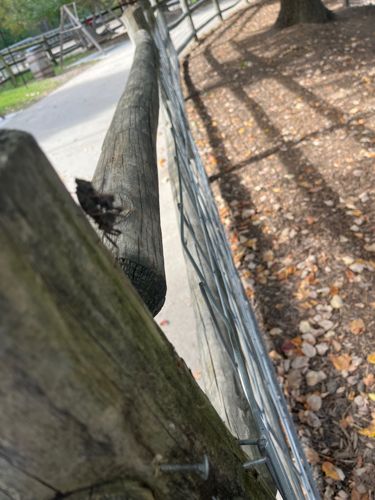Moth
Scientific Name: Unidentifiable due to image clarity
Order & Family: Lepidoptera (Order, Moths and Butterflies); Family is not identifiable from this image.
Size: Highly variable, from a few millimeters to several centimeters. The specimen in the image appears small to medium-sized.

Natural Habitat
Widely varied, depending on species. Often found near host plants, trees, or artificial lights at night. The image shows it on a wooden fence outdoors.
Diet & Feeding
Adult moths often feed on nectar from flowers, tree sap, or decaying fruit. Larvae (caterpillars) typically feed on plant leaves, stems, roots, or other organic matter.
Behavior Patterns
Nocturnal activity is common for many moth species, attracted to light. They undergo complete metamorphosis (egg, larva, pupa, adult). Many species use camouflage to blend into their surroundings, as this one appears to be doing against the wood.
Risks & Benefits
Risks can include agricultural pests (caterpillars consuming crops). Benefits include important pollinators, a food source for other animals (birds, bats), and decomposers (some larvae feed on decaying matter).
Identified on: 10/11/2025